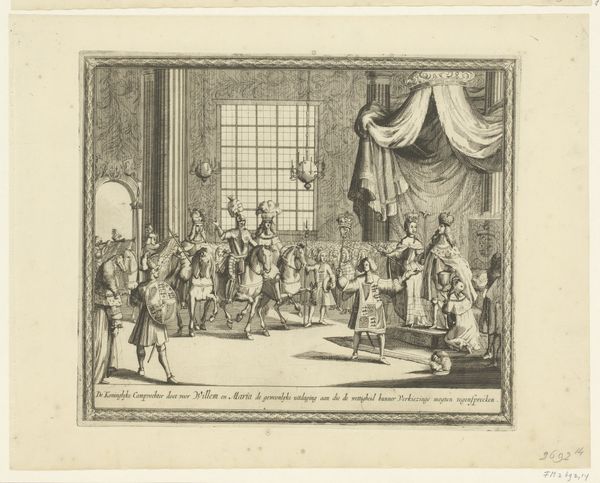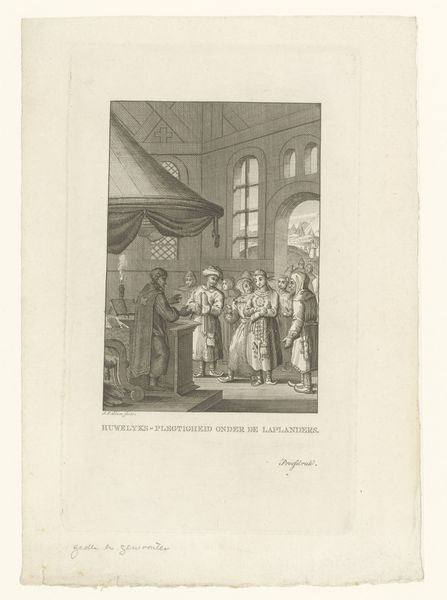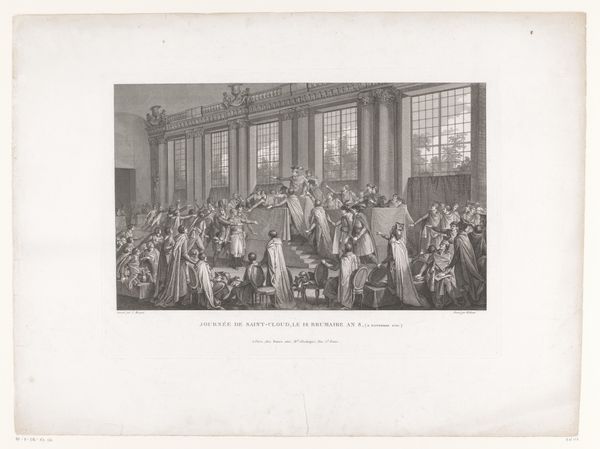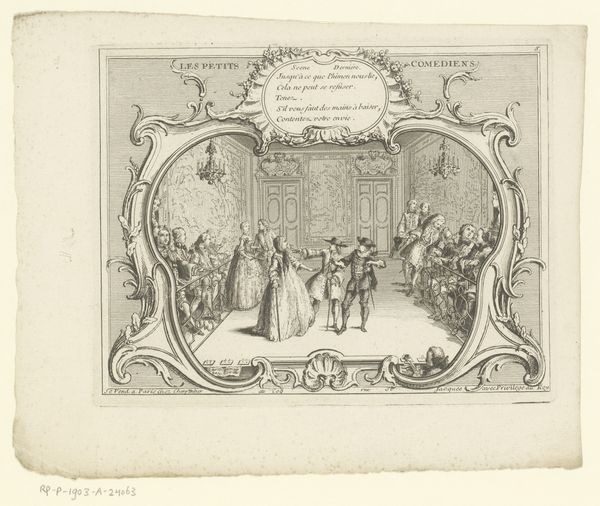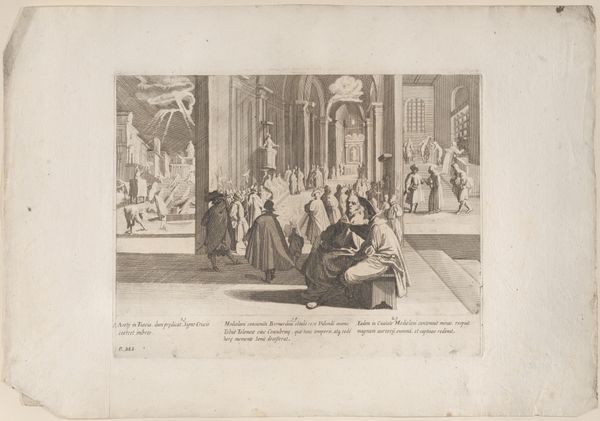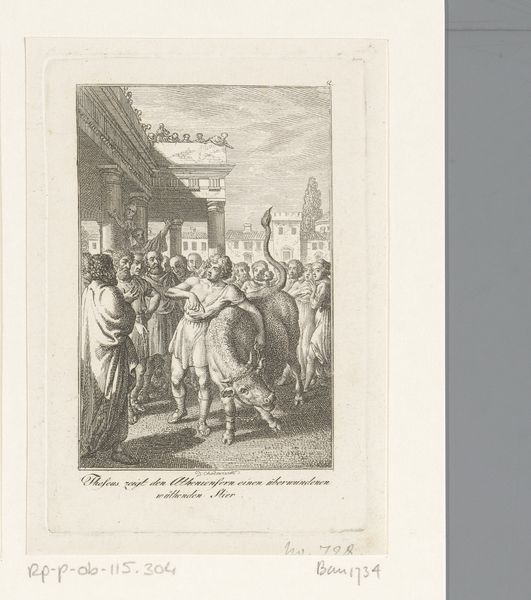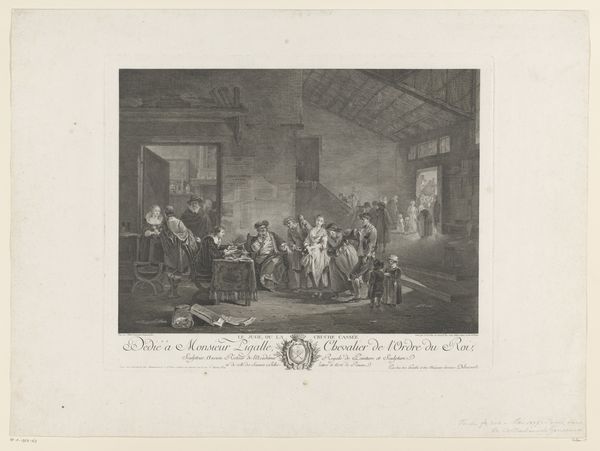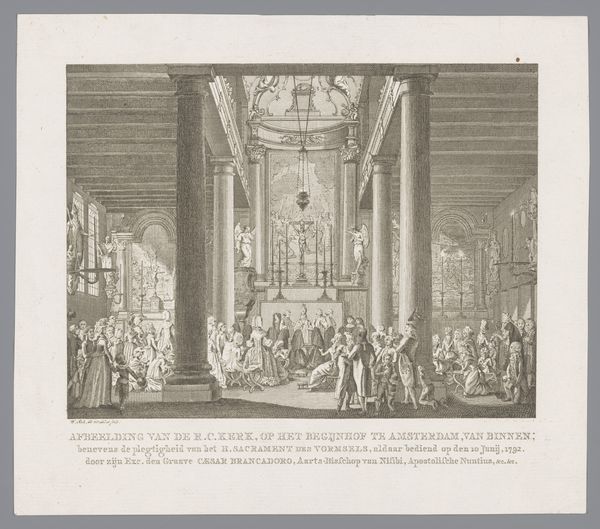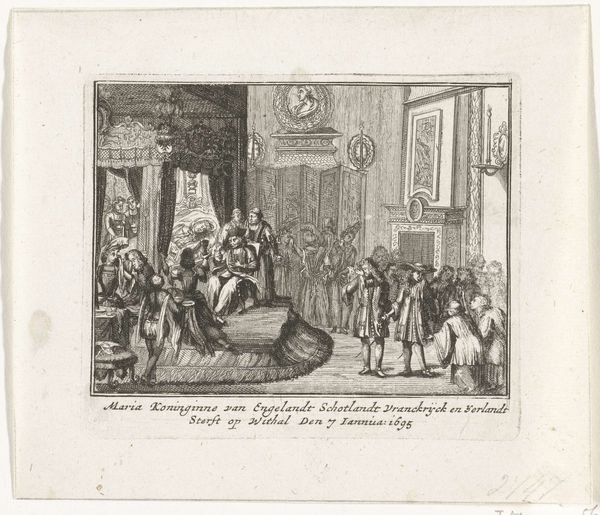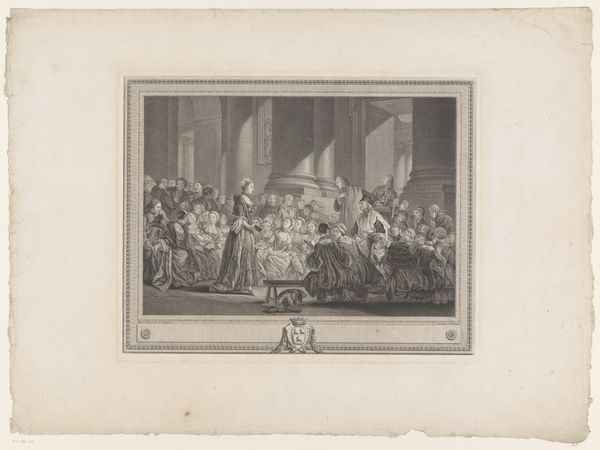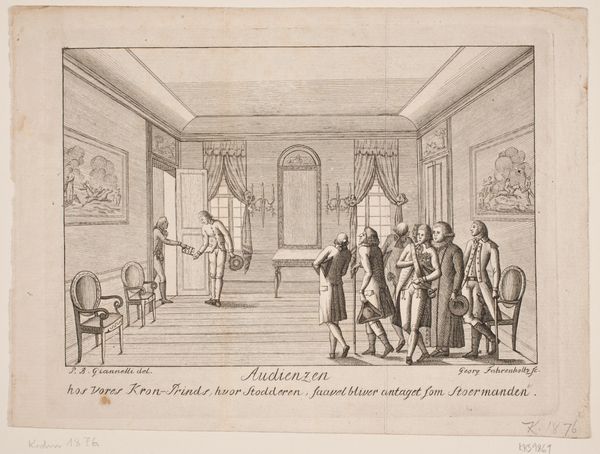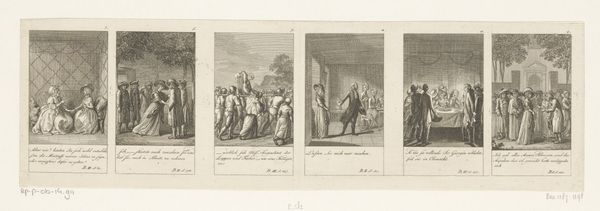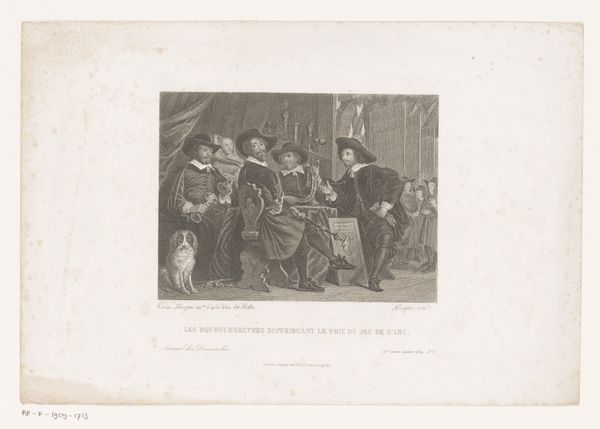
print, paper, engraving
#
neoclacissism
#
ink paper printed
# print
#
paper
#
history-painting
#
engraving
Dimensions: height 136 mm, width 150 mm
Copyright: Rijks Museum: Open Domain
Curator: Here we have "Staatsgreep van 18 Brumaire", or "Coup d'état of 18 Brumaire" an engraving printed on paper after a design by François Louis Couché. It appears to have been made sometime between 1799 and 1849. Editor: My first thought is the stark contrast, a near complete absence of shadow, which almost flattens the image and gives it a very documentary feel. What’s your perspective? Curator: It's compelling to observe the arrangement of figures within the frame; see how they are distributed in discrete groupings across the chamber. This creates a dynamic yet balanced composition, lending a sense of orchestrated chaos. Editor: The grouping contributes to the image's powerful symbolism. We see how those classical sculptures surrounding the space allude to republican ideals and perhaps underscore Napoleon's complex relationship to them: inspiration, co-option, and outright rejection? Curator: The strategic placement of those figures reinforces this tension; note how the figures advance in opposition to the figures to the right of the frame, who appear more rooted to their setting by being closer to the base of the neoclassical forms. This can also be read as a nod to a specific pictorial language associated with power. Editor: Yes, and I also read into it a commentary about progress versus stagnation as the ideals of enlightenment are supplanted by a singular and all-powerful leader. The almost bureaucratic approach to rendering, particularly in a Neoclassical style, does give this imagery more of an iconic status. Curator: Indeed, the stark linear quality created through the print medium invites us to dissect the piece, to analyze the careful geometry that Couché employed. The artist almost asks us to reflect on the interplay between content and form, inviting engagement. Editor: Thinking of those formal components in terms of symbolic power makes the image even richer. We're left grappling with a critical moment, an act with long echoes through our present moment, portrayed with a very particular sensibility that still demands deconstruction. Curator: Yes, a blend of revolutionary fervor and imposed order, rendered with calculated precision and neoclassical forms that ultimately transcends its historical subject.
Comments
No comments
Be the first to comment and join the conversation on the ultimate creative platform.
